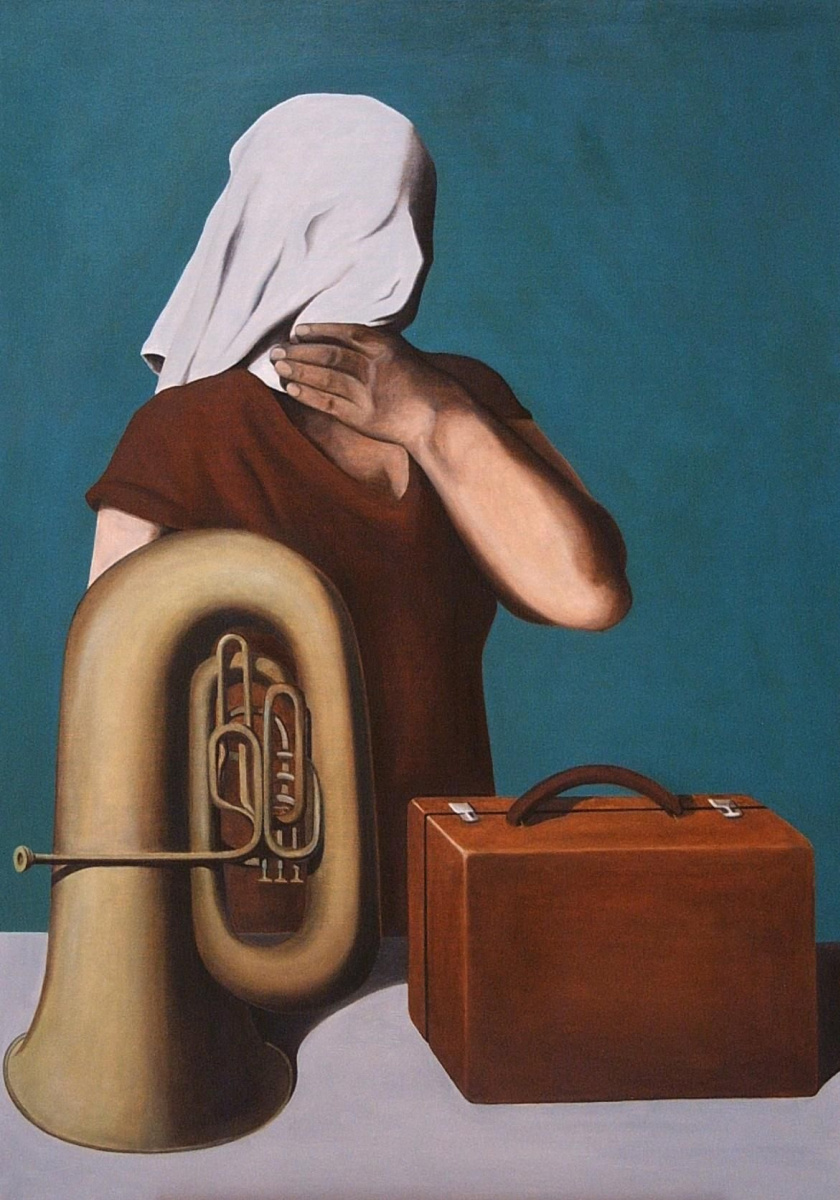log in
Enter site
Login to use Arthive functionality to the maximum
Essence of the matter
René Magritte • Painting, 1928
Description of the artwork «Essence of the matter»
Picture "The essence of the matter" was deeply personal to Rene Magritte. When the future artist was only 14 years old, his mother committed suicide by rushing into the river. All her life, Regina Magritte suffered from bouts of deep depression and tried several times to take her own life. Her husband Leopold was very worried about Regina’s condition and feared that another suicide attempt could succeed. In the end, he locked his wife in her bedroom, but at some point she managed to escape. They searched for Regina for several days, and eventually found her body in the Sambra river downstream.
According to legend, young Rene was on the riverbank with relatives and neighbors when his mother’s body was taken out of the water. Later, however, this version was disproved. Be that as it may, rumors spread fast. Rene knew that the river current laid bare Regina's body, wrapping a nightgown in which she fled from the house, around her head and hiding her face. This image will later appear in the artist’s paintings, for example, in the famous “Lovers". However, Magritte did not like to talk about how his mother died, and for a long time even his wife Georgette did not know terrible details.
The image of a woman in the picture “The Essence of the Case” seems to be a direct reflection of the artist’s memories of her mother. Her face is hidden under the fabric, with her hand she squeezes her throat, trying either to pull off this interfering cover, or to suffocate herself. When the story of the death of Regina Magritte finally became public, lovers of fashionable psychoanalysis then began to "unravel" the secrets of Magritte's paintings from the point of view of Freudian theory. The artist himself, who, unlike most surrealists, was an ardent opponent of psychoanalysis, categorically denied the connection between the plots of his works and personal history. He wrote: “My painting is visible images that do not hide anything behind themselves. They awaken a secret, and when a person sees my picture, he asks himself a simple question: “What does this mean?” But this does not mean anything, because the secret also means nothing, it is unknowable. "
Author: Evgenia Sidelnikova
According to legend, young Rene was on the riverbank with relatives and neighbors when his mother’s body was taken out of the water. Later, however, this version was disproved. Be that as it may, rumors spread fast. Rene knew that the river current laid bare Regina's body, wrapping a nightgown in which she fled from the house, around her head and hiding her face. This image will later appear in the artist’s paintings, for example, in the famous “Lovers". However, Magritte did not like to talk about how his mother died, and for a long time even his wife Georgette did not know terrible details.
The image of a woman in the picture “The Essence of the Case” seems to be a direct reflection of the artist’s memories of her mother. Her face is hidden under the fabric, with her hand she squeezes her throat, trying either to pull off this interfering cover, or to suffocate herself. When the story of the death of Regina Magritte finally became public, lovers of fashionable psychoanalysis then began to "unravel" the secrets of Magritte's paintings from the point of view of Freudian theory. The artist himself, who, unlike most surrealists, was an ardent opponent of psychoanalysis, categorically denied the connection between the plots of his works and personal history. He wrote: “My painting is visible images that do not hide anything behind themselves. They awaken a secret, and when a person sees my picture, he asks himself a simple question: “What does this mean?” But this does not mean anything, because the secret also means nothing, it is unknowable. "
Author: Evgenia Sidelnikova


